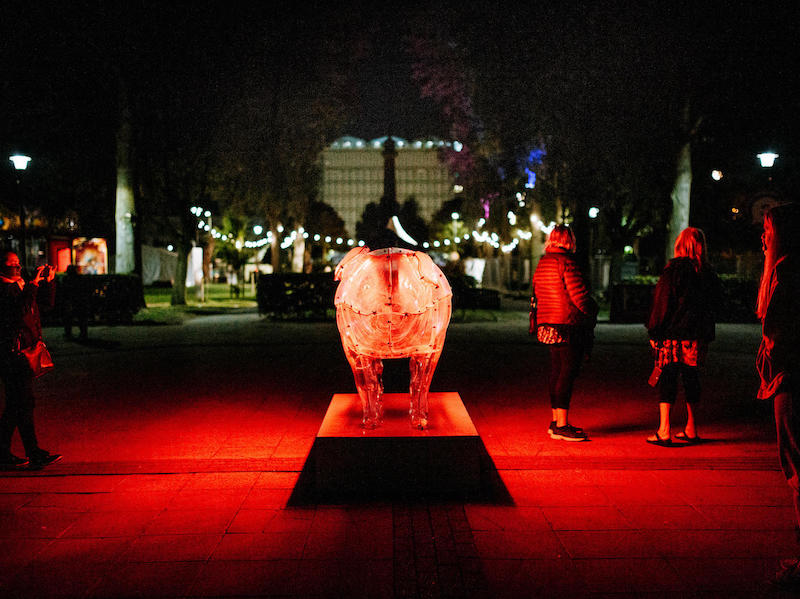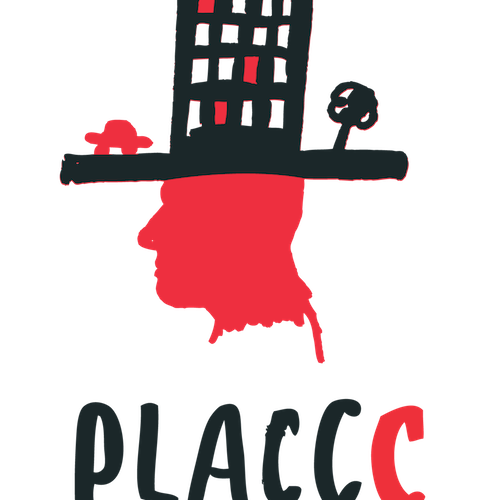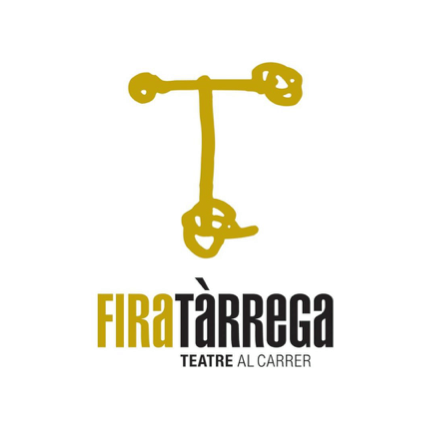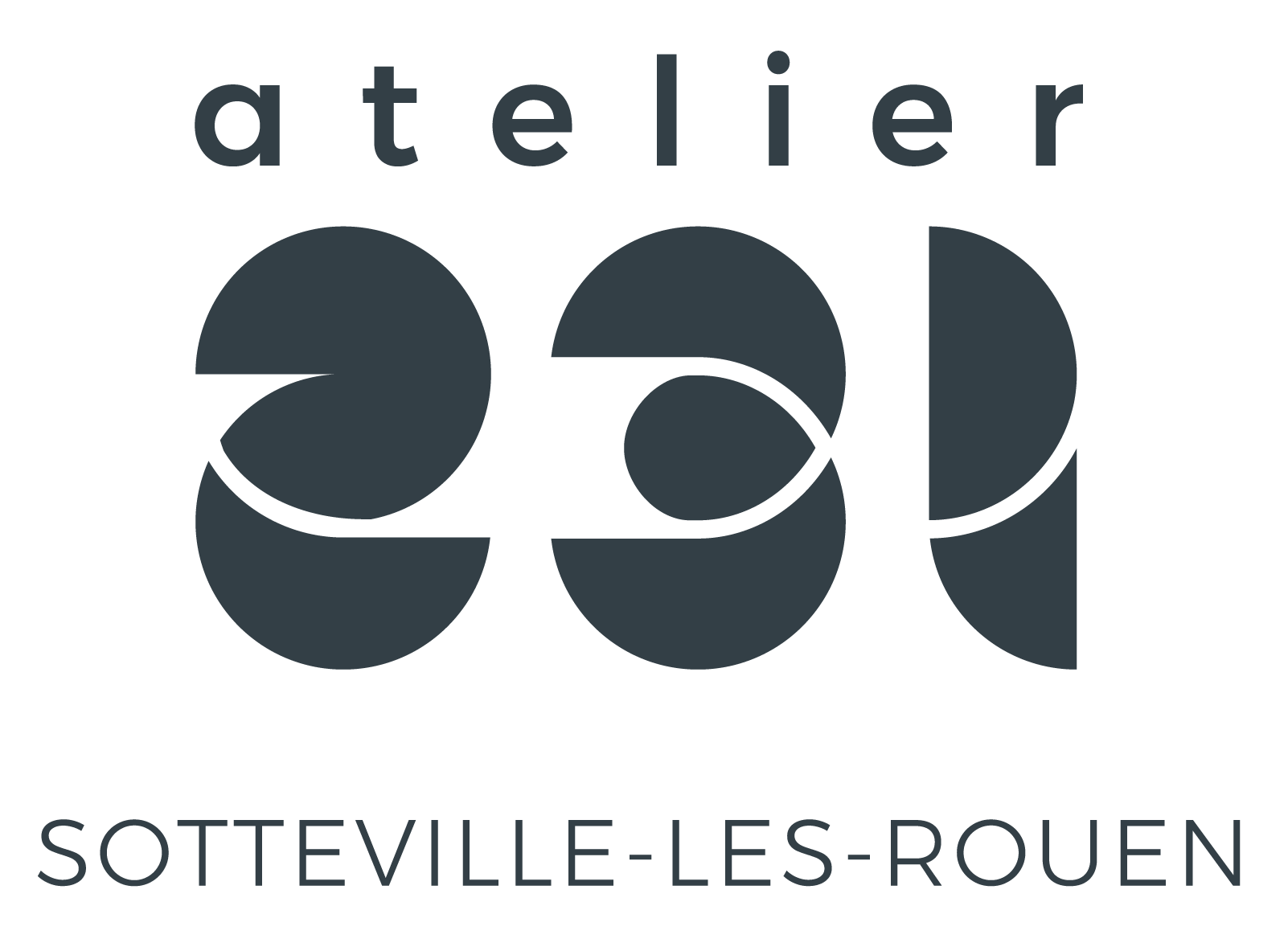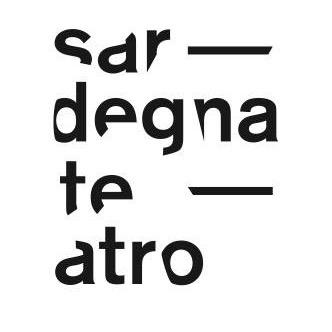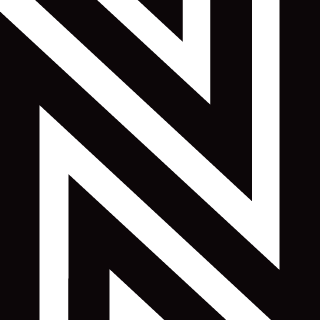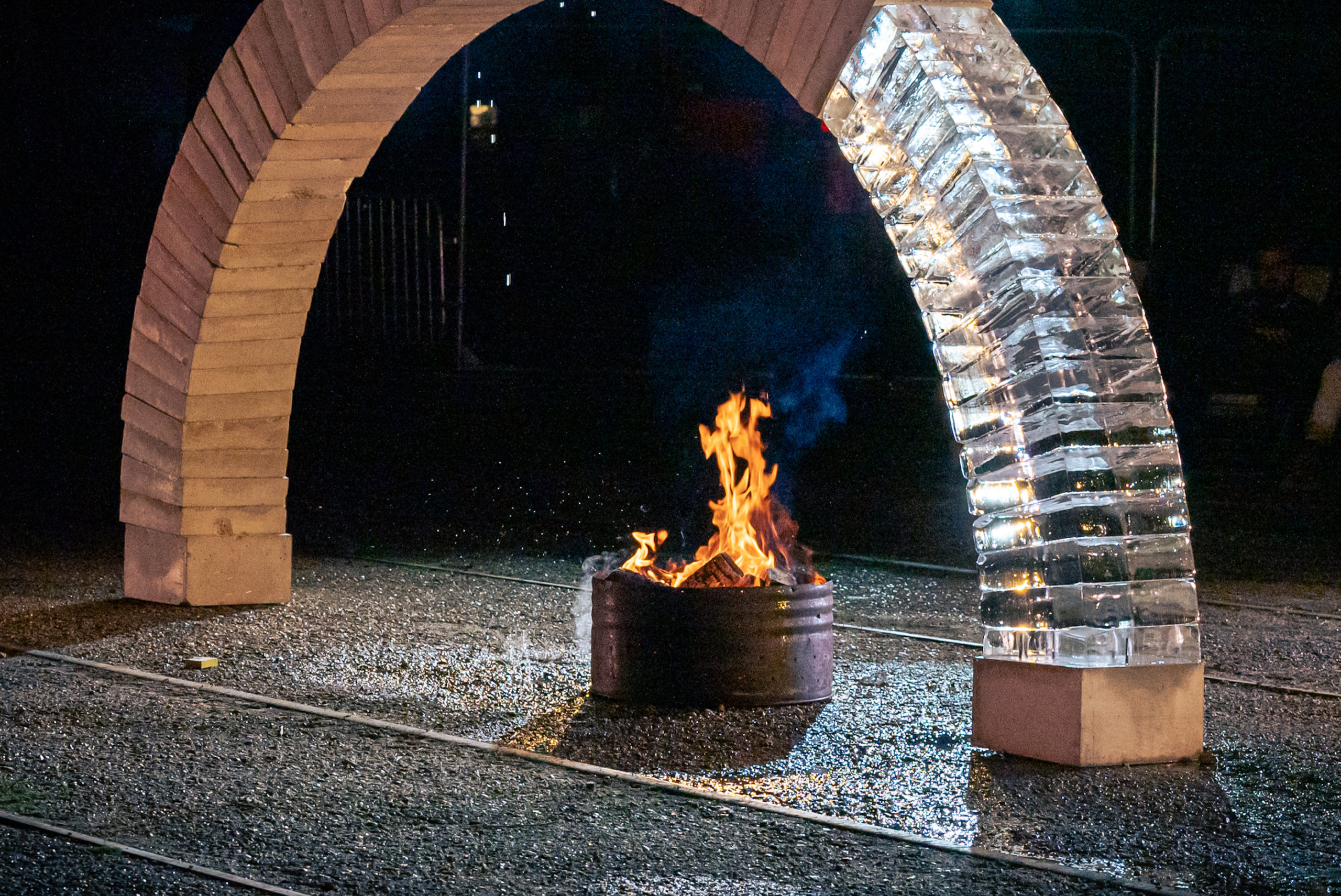
Outdoors. Night-time. A cut-down oil drum holds a fire burning brightly under a completed arch made of ice and concrete blocks.
Seth Honnor, artistic director of Kaleider (UK) and associate artist of Freedom Festival under the (UN)COMMON SPACES project, shares with us part of his European tour through the IN SITU network.
With various projects in diffusion ('PIG', 'Robot Selfie', 'The Money', 'The Time it Takes','Fish Mobile'), production and research ('Arch') Seth Honnor offers us an intimate behind the scenes glimpse of an IN SITU artist.
| Reading time: 27 minutes. Listen to this article, narrated by Seth Honnor, here: | |
August 2022, Kaleider Studios, South West England |
August is full to the brim for me. I’m fabricating a new work for Milan and have to finish it before I leave at the end of the month. I’m very excited about the work, but I don’t have enough time to test it before I leave. So it is excitement tinged with unknowing. Unknowing is not uncommon for us in presenting work. The audience's role in completing our work often means it cannot be rehearsed. The installation in BASE Milano’s main hall is a significant opportunity for us. I feel the excitement, and the weight of the risk. |
September 4th, Budapest, Hungary |
The first weekend of September. Kaleider’s Executive Producer Katie Keeler is leading a team to deliver Fish Mobile in Rotherham, and Producer Jocelyn Mills is in Budapest with Pig. Our team is at full stretch. I say goodbye to my family who I don’t plan to see again for more than a few days in late October, before going away again until November 6th. Presenting Kaleider’s work in different countries and cultures is a privilege, exciting, enriching: the opportunities for art to meet audiences is success in our not-for-financial-profit model. I tell (persuade?) myself it is somehow good for my kids that I am doing this, as well as hard for them. At the station a chance encounter with a close friend from university I haven’t seen for years. He’s getting off the same train carriage that I am getting on. “How are you?” “Still exhausted by teaching. Where are you going?” “Budapest. Today.” I graciously receive others’ generous desire for me to be excited. Right now, alone on the train, I am just sad. For which I feel simultaneously guilty and justified. I arrive very late into Budapest. My room has only a fake led window of blue sky with some clouds. I unplug it and sleep. I am here to research for future work. Pig has just finished after 4 days in the city centre. I have enriching conversations with artists and producers. Then an arranged meeting with a consultancy, who provide multinational clients with social, political and economic intelligence on Hungary and Europe. I receive an hour’s presentation. My Hungarian colleague who was not intending to stay, is compelled to do so by what she is hearing: “I knew it all, but to hear it laid out like that!?” Half way through I feel across it and interested, but by the end I feel nauseous. There is a logic to the narrative, which makes it much more concerning. And I recognise its rise across the entire North Atlantic bloc. It is a narrative that thrives on low trust, fear and division. I carry what I felt in this meeting with me over the following weeks in Europe and America. How it will make it into a future production I don’t yet know. |
September 7th, Tàrrega, Catalonia |
The production team has already arrived and set up Robot Selfie. We’ve been supported to come here by the festival, Fira Tàrrega, and by Xtrax, supporting Catalonian and British artists. The support has enabled Jocelyn and Comms Producer, Irene Urrutia to come too. Kaleider‘s work can often be characterised as bringing people together, often strangers, either in conversation, sometimes dilemma, or as with Robot Selfie, in a massive mural in public space, strangers together in a depiction of solidarity. At a breakfast meeting where I’m asked to give a short presentation I find, alongside our experience of Britain leaving the EU, I’m already sharing my Budapest experience (they are, of course, connected)… “The independence sought through Britain voting to leave the EU has far from helped us in our mission to bring people together, but we are determined to continue to work and collaborate in mainland Europe, as long as we are invited. It has without doubt become harder and more expensive. Earlier this week I had the privilege of meeting with a political analyst in Budapest, who gave me a presentation of the political, economic and social landscape in Hungary. It is not only remarkably shocking for Hungary, it is recognisable, if not wholeheartedly present, across the North Atlantic bloc. So, against this narrative, networks, and festivals and art, and the diversification of all of them, is even more vital, to bring people together to touch each other intellectually, and actually physically too - to be in the same real space together.” I wrap it in slightly more positivity than here, but it nevertheless feels heavy for breakfast. |
September 12th, Home, United Kingdom |
After Spain, Sotteville, France, for the first public presentation of Arch. We haven’t made the show yet. We’re presenting it to find out what it is and what it could be. Although we often can’t rehearse our work, it is normally more complete before we invite an audience in. This is the piece for me. It is the piece I have wanted to make for six years. But the van is too heavy to take all of us from Tàrrega to Sotteville, so I take the opportunity to sneak home for two days. Going home I am The Excited that everyone wanted me to feel going away. I fall into the fold of my family for two nourishing days. Still processing my meeting from Budapest I look for alternative narratives. An email from The Ethics Centre in Sydney points me to Enlightenment Now by Steven Pinker. On the train to France I begin to read it. I am struck by its persuasion that although it feels like things are getting worse, in almost all measures of improvement the headline data proves that things are improving. Or as Pinker quotes Barack Obama as saying: “If you had to choose a moment in history to be born, and you did not know ahead of time who you would be - you didn’t know whether you were going to be born into a wealthy family or a poor family, what country you’d be born in, whether you were going to be a man or a woman - if you had to choose blindly what moment you’d want to be born, you’d choose now.” How do I get this complexity into the work? The combination of this hopeful reality with the also very real feeling of sliding towards hopelessness, the reality of climate breakdown and the associated socioeconomic and social justice breakdown. |
September 15th, Rouen, France. Arch. |
Four of the five Kaleider core team members are at Atelier 231, in Sotteville-Lès-Rouen, and production managers Fiona Rourke and Jay Kerry too. For us this is research and development, and we need the team to be across it, to learn together. We’ve also got Barney Witts from Fluxx Films to capture everything on film. We wouldn’t be able to work like this without the support of the creation centre, Atelier 231, and IN SITU. It is amazing being in a creation centre, and we are generously given access to tools to make what we need, along with the agency to get on with it. It’s refreshing and empowering. Jay and Fiona build the former for the Arch and we discuss the shape of the piece. We have built the arch once before at this scale, in the studio, but it fell in seconds. We think we can keep it standing longer with what we now know. The Parisian ice makers who will deliver the ice tell us that if we run a heated metal plate across the surface of each ice block they will fuse together better. But then the risk is that it will stand all night. We introduce a new element: fire. And, in what feels at the time like it might be received as rather passive-aggressive, decide to give the audience champagne (not even champagne) in paper cups (“Really? In France?”) once the arch is formed. |
September 18th |
It is just before sunset and Jay and I light a fire in a cutdown oil drum. Unlike the other performances over the weekend with loud soundtracks, all we have are microphones taped to our faces, through which the audience can hear our breathing and now and again our voices. Several empty deckchairs for audiences that don’t know we’ve started face us. Some are filled in anticipation of something. We build with the ice blocks first. We heat a metal plate on the fire and slide it across the top of each block. For several blocks it works a treat. But then the heat starts to make the plate uneven and we get a bad join. We try to pack it with ice and water, and freeze it with a fire extinguisher. We keep going. We build the concrete side. Then, about an hour and a half in, the sun now gone, the concrete blocks meet the ice. We try to remove the former. The now bigger audience is on tenter-hooks. It’s cold for them and they have really invested by now. But the weak join in the ice is too weak. And it cracks. We cannot remove the former without an entire collapse. We unload the concrete. Some audience move away. We manage to lever off the five ice blocks above the weak join and they crash to the ground and shatter. We put the ice in a bucket to cool the wine. We build the ice back up and replace the concrete. Some audience return. We attempt to remove the former for a second time but it is no good. The same join is a problem. I think we won’t manage it tonight. The arch weighs 1.5 tonnes, and we’ve been building for 2.5 hours now. Keen not to give up, we decide to move the point at which the concrete meets the ice to the problematic join. We don’t have enough spare concrete to make up the difference, but we have spare ice, so we use ice in the top of the arch, where we know the arch is stronger. We tentatively inch the former out from under the arch. There are immediate gasps as it becomes clear that the arch is standing on its own. We set the former aside, and walk around to the front. It looks beautiful. As we had been nearing completion I had begun to question our next move. Could we not sit with the arch a little, to see it standing? So much work. But, as the audience begin to applaud I am clear our plan was right: We kick the fire bucket under the arch and the applauding peters out and is replaced by intakes of breath and mumbled acknowledgement for this turn of events. We hand out wine bottles and paper cups and move away. After enduring the performance the audience are pleased to receive the sweet taste of the wine. It is simultaneously rewarding and absurd. The arch stands and drips for twenty or twenty five minutes before falling dramatically into the fire. Steam and smoke slowly rise in the lights as the blocks lie strewn on the ground. One of the cooks from the creation centre returns from a dutiful errand to find it fallen and is mortified that she missed the fall. We learn a lot. And I am convinced that I want to have human voices, maybe a choir, to sing throughout. Even after the fall. |
September 19th, Vermont, USA |
| The next day Katie and I leave for Burlington, Vermont. A hotel for a night to gather the team, Katie, me, and The Money Hosts Laila Diallo and Nao Nagai. Then we head to our shared house in the middle of the state. Katie drives us in the dark, over the mountains, on dirt roads. The last time we did The Money was in a West End run at County Hall in the centre of London. This run in Vermont is four community venues across a rural state. The Flynn, the biggest presenting house in the state, has not tried this before. We do a few shows in Burlington, which are nail-biting and fun. The thing about The Money is that, even after 9 years, it can still surprise me. And it does. A tiny audience in rural Vermont in a school gymnasium becomes one of the funniest, most heartwarming episodes of The Money I’ve seen. I’m reminded that it isn’t always about numbers. |
September 27th |
| Early morning. Laila and Nao wake up to say goodbye. Although it’s only been a week it has felt like a real adventure, with a lot of laughter. Katie and I drive an hour north to meet producer Jodi who will take me another hour to the airport. I’m leaving Katie and The Money team to complete the run and heading to Milan to open The Time It Takes. |
September 28th, Milan, Italy |
I sleep for as much of the 8 hour flight as I can, arriving in Milan at 9am local time. My body thinks it’s 3am. I arrive at BASE Milano and am shown my room. It is literally one floor up from the hall that will hold the installation. And very cool. I go downstairs, have a coffee, and we begin the installation. Over the next 10 days I will barely move outside the path between the venue, the bar, and my room. When I was tiny - something like 3 or 4, (“you were 2”, my uncle later tells me) I was taken to a gallery in rural Cumbria. It was an old pigsty turned into a kind of gallery by Li Yuan-Chia. He’d made several pendulums with rocks and string with which he was drawing pictures. I was utterly enthralled. 35 years later I made twin elliptical harmonographs for my nephews, mum, and children for Christmas. But, I think, if we’re honest, I ended up playing with my kids’ one rather more than they did. I made a bigger one in the studio at Kaleider and noticed how people who came by were not only fascinated with the drawings the machine made, but also the process of instigating the movement themselves. So when Linda Di Pietro, Artistic Director of BASE, invited me to make a new work about “time” I proposed three massive harmonographs to hang in the 7.5m high space at BASE. A mismeasurement means the pendulums are 40cm short, and we have to redesign and resubmit drawings for signoff. And then fabricate the new design. But Paulo, the crane operator, arrives the following morning with 3 large sections of timber, perfectly milled, to solve the problem. And between us all we hang all three. But I need time to tune the harmonographs, and the mistake has eaten into that time massively. I still don’t know if they will draw well. To start with they don’t. But after some more tuning I get the first good drawing. I give it to Linda. I am relieved. I know now that it will be possible to get them all drawing well. A national TV news crew comes to film. I’m desperate to get the good drawing from Linda’s office to have them film a good one. By the launch on Saturday night I have spent most of my waking hours in the hall for the install. And now, with what feels like hundreds of people passing through I am moving between machines, helping people to initiate the swings, and then inviting them to take away the picture the machine has drawn. The following day I draw for 12 hours. Then 6 or 7 hours, afternoon to late evening, for the following five days. Private late night drawing becomes a thing for a lucky few: funders, Milan’s head of Culture, a curator from Pirelli’s HangerBicocca. She invites Linda and me to see Born in the first light of the morning [moswara’marapo] by Dineo Seshee Bopape. It is beautiful and arresting and courageous and difficult. There is so much effort and emotion poured into it. The spaces at HangerBecocca are enormous. In the next (bigger) space is a Bruce Nauman installation. On the way back to BASE we talk about the need for conceptual frameworks for programming work into visual art spaces of that scale, and how it’s something I’m resistant to, not comfortable with, or maybe just not good at. It seems to me, with Nauman’s huge walls literally occupying space in the bigger space, whatever concept he had is nothing more than an led window in a windowless room, and is just offensive in juxtaposition to Dineo Seshee Bopape’s very real window she has passionately, painfully and lovingly crafted for us to gaze through. |
October 3rd |
One evening I decide to finish a bit early because there is a lull in audience and I’m knackered. It’s 11pm and I’m having a beer with BASE’s lead producer Agnese Da Col and this guy who works in the bar comes over and asks if he can do a drawing. Agnese says “no because Seth has finished for the night and he’s tired”. But he really wants to so I say, “come on, why not.” He and his friend come into the hall with me. I switch on the lights and prepare a pen. The guy from the bar wants his friend to do the drawing, so I explain how to do it. But he’s frozen. I think, “oh crap, this person is really drunk. This could go wrong”. And suddenly he starts crying. I ask what’s up and he says his mother has just died. We stand there, him crying, the guy from the bar talking Italian to him. Encouraging him to do a drawing. So I walk over and take his arm and put one hand on the harmonograph, and then the other. And encourage him to get it swinging. I lower the pen onto the paper and the three of us stand there, the friend in tears, watching it draw. I put my hand on his shoulder and say to him “it’s one line, like one life”. He is bursting with grief, and tears. After it’s finished he says “are they all the same?” So I take him to the table with all the others on and say “each one is different, like each beautiful life”. I roll up his picture and ask him how he’s getting home and whether he wants me to keep it for him but he wants to take it tonight. I give it to him. And he hugs me. |
October 8th |
| It’s Saturday. The team is going to Sardinia on Monday to set up for Robot Selfie. But I am going home for a few days. I don’t know if I’ve ever been this tired. But something has happened this week. At times it was very intimate, drawing with one or two others, at times performative, with many watching. It is extremely meditative, to watch the line appearing on the bright paper, and gradually shifting the form. The transformation I witnessed in people from initiating the movement to taking their artwork home, rolled up, was beautiful. It was, I think, one of the best weeks of my career. |
October 15th, Cagliari, Sardinia |
Sardinia is warmer than it should be for this time of year, like an English summer. I arrive in Cagliari on the last day of painting Robot Selfie. Jay and Fiona have had a quiet week painting whilst I composed the image from home. The courtyard of an old Tobacco Factory, Sa Manifattura, is a great setting, but audiences are sparse. Sardegna Teatro have moved to this complex and are at the beginning of their journey to animate it. Jay and Fiona leave and I have three days of drift before The Money team arrive. I take a bus an hour to the beach, off season it’s almost empty. I find a deserted cove or two and balance stones, and swim in the sea. The terrain is like that of my birthplace and home: granite sand beaches and blue sea. I’m grateful for a slower day. |
October 19th |
The Money team arrive: Laila Diallo and Lucy Cassidy. We run the show three times over two days in Sa Manifattura. The first show ends with no agreement and the money rolls over. In the last moments of the second show, all 15-17 year olds, the Players nearly manage to come to an agreement about how to spend the money. Some have invested extra money in the hope of making the pot stretch further. But the time runs out and the money rolls to the final show. I’ve been watching this show for 9 years now, on different continents, in different languages. I’ve come to learn how to read it emotionally even when I don’t know the language well. These young people will be talking about what’s just happened for a long time. In the final show the Players agree to build an outdoor “social table” for Sa Manifattura. I look forward to the table’s stories, and sitting at it next time I come. I love the long tail to this show. |
October 23rd, Home |
This week we, along with all other structurally funded arts organisations in England, are due to find out whether we will continue our 3 year funding agreement with Arts Council England. But the total meltdown at the top of the UK government delays the outcome of everyone’s applications until November 4th. I get the figures through that show this period of two months touring has cost an additional £7800 due to Britain’s decision to exit the EU. We’ve left 'The Time It Takes' in Milan', in the hope our next installation for it will be in the EU within a year, when we will be forced to bring it home. |
"Europe is vital to us, it is our biggest and most reliable market. There is no positive opportunity for us in having left the EU - only additional cost, reduced opportunity and cultural embarrassment."
October 30th, Fredrikstad, Norway |
To Norway for a week’s residency with Østfold International Theatre (ØIT). I am here with IN SITU artists, some of whom I was with in Budapest, and another who’d been in Milan, and Terschelling earlier in the year. We’ve intersected in different places in Europe over the past 2 years and know and support each other in our different practices. It’s a very special peer network for which I will always be grateful. We are here to research for our work to be presented in 2024. For me, a physically larger version of Arch. The week is intense. Our time is over-programmed and as the week progresses we gradually detach from the information being broadcast at us. It is a stark and, at times, painful reminder of the vital importance of fully inclusive design. |
November 3rd |
I am nearly broken by being out in the rain and listening to verbal information for the fourth day. But the afternoon programme is a trip to a quarry and a stone mason’s. I have been before, virtually, on a video call, in preparation for Arch in 2024. To go for real is fantastic! The family owners have been cutting and shaping stone for 4 generations. They welcome us into their warm office and I immediately connect with them. I have been living on and in granite almost my entire life, and handling it since I was a small child, seeing and helping my parents rebuild their dilapidated house. We talk about building a 5m high 10m wide arch. It is absurd and thrilling to think I might come back to work alongside these deeply sensitive crafters. With a large choir alongside the build I imagine an outdoor installation of operatic scale. I am filled to the brim with excitement and possibility. |
November 4th |
10:06am CET. My phone rings. The name on my phone tells me it is a Senior Manager at Arts Council England, who I have known and worked with for 25 years. He tells me that our application to Arts Council was “strong” (the highest it can score) but that in the “balancing process” (this, as I understand it, is an un-recorded set of conversations between unspecified people) it was decided not to fund Kaleider because of "levelling up for culture" (this, in our case, as I understand it, is to do with where Kaleider is based in England). It feels like I’ve run a marathon these past two months, and, just as I cross the line, I‘ve been punched in the face. That evening at dinner, I cynically point out that where Kaleider is based is a political island in the deep south west. It is the only council in the area run by the opposition party and has done very badly in this funding round. And the government needs votes in the north. My Hungarian friend says calmly: “Oh yeah, that’s what Orban does.” In reality Arts Council England has an “arms length” relationship with government, for which I’m grateful. And I support money being invested in areas of underinvestment. But moving the same money around is not “levelling up”. The “up” is rhetoric - it’s just levelling. I do wonder if the arm is getting shorter. |
Saturday November 5th, 8am CET |
I leave for home. |
Sunday November 6th, Home |
I wake in my own bed at 6am. I have tears in my eyes. I compose in my head a reply to Arts Council’s rather perfunctory formulaic letter: Dear Arts Council, Kaleider is a tree that you helped to plant and grow. And you have cut it down. It will no longer be able to support the 200 species it hosts in its branches. If you count the rings there will be 11 summers and 10 winters. The outer ring, the most recent year, is the largest and strongest, (despite the pandemic), and used the most energy. Next year’s was to be stronger still. Yes, we might sprout back, but the chain of your saw hurts. In the clarity that comes in the early hours I extend the metaphor out and out. But I know. There is nothing to say. It is just a funding stream. We will find another way. I get up and have breakfast. |
Monday November 7th, Kaleider Studios |
Peter Vanderford, Kaleider’s General Manager, Katie, Irene, Jocelyn, and I meet in our studio. It is good to be together. We are all determined that there is too much to lose to stop now. Too much to gain. We make a plan. Nao Nagai writes to us: “Great to hear you are already planning! That’s the unique thing I think homo sapiens can do. Plan. (apparently…according to some historians...) Planning is an extension of dreaming…” |
"I have wanted to make Arch for 6 years. I want an audience to wander through the beauty, the flaws, and the fragility of our current global systems. We will dream it into existence."

